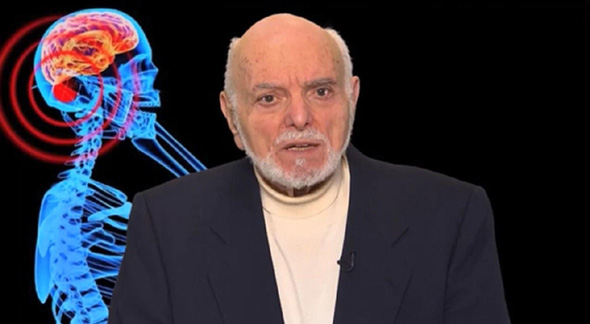
Two hundred and seven International scientists including EMF researchers, university professors, and medical doctors from 40 countries have signed an appeal which calls upon the United Nations (UN), the World Health Organization (WHO), and the UN Member States to address the emerging public health crisis related to cellphones, wireless devices, wireless utility meters, and wireless infrastructure in neighbourhoods. They also urge the United Nations Environmental Programme (UNEP) to initiate an assessment of alternatives to current exposure standards and practices that could substantially lower human exposures to non-ionizing radiation.
We are scientists engaged in the study of biological and health effects of non-ionizing electromagnetic fields (EMF). Based upon peer-reviewed, published research, we have serious concerns regarding the ubiquitous and increasing exposure to EMF generated by electric and wireless devices. These include, but are not limited to, radiofrequency radiation (RFR) emitting devices, such as cellular and cordless phones and their base stations, WiFi, broadcast antennas, smart meters, and baby monitors as well as electric devices and infrastructures used in the delivery of electricity that generate extremely-low frequency electromagnetic field (ELF EMF).
Scientific basis for our common concerns
Numerous recent scientific publications have shown that EMF affects living organisms at levels well below most international and national guidelines. Effects include increased cancer risk, cellular stress, increase in harmful free radicals, genetic damages, structural and functional changes of the reproductive system, learning and memory deficits, neurological disorders, and negative impacts on general well-being in humans. Damage goes well beyond the human race, as there is growing evidence of harmful effects to both plant and animal life.
These findings justify our appeal to the United Nations UN and all member states in the world to encourage WHO to exert strong leadership in fostering the development of more protective EMF guidelines, encouraging precautionary measures, and educating the public about health risks, particularly risk to children and fetal development. By not taking action, the WHO is failing to fulfill its role as the preeminent international public health agency.
Inadequate non-ionizing EMF international guidelines
The various agencies setting safety standards have failed to impose sufficient guidelines to protect the general public, particularly children who are more vulnerable to the effects of EMF.
In 1998, the International Commission on Non-Ionizing Radiation Protection (ICNIRP) established the “Guidelines For Limiting Exposure To Time-Varying Electric, Magnetic, and Electromagnetic Fields (up to 300 GHz).” These guidelines are accepted by the WHO and numerous countries around the world. The WHO is calling for all nations to adopt the ICNIRP guidelines to encourage international harmonization of standards. In 2009, the ICNIRP released a statement saying it was reaffirming its 1998 guidelines, as in their opinion, the scientific literature published since that time, “has provided no evidence of any adverse effects below the basic restrictions and does not necessitate an immediate revision of its guidance on limiting exposure to high frequency electromagnetic fields. ICNIRP continues to make these assertions, in spite of growing scientific evidence to the contrary. It is our opinion that, because the ICNIRP guidelines do not cover long-term exposure and low-intensity effects, they are insufficient to protect public health.
The WHO adopted the International Agency for Research on Cancer (IARC) classification of ELF EMF in 2002 and of radiofrequency radiation (RFR) in 2011. This classification states that EMF is a possible human carcinogen (Group 2B). Despite both IARC findings, the WHO continues to maintain that there is insufficient evidence to justify lowering these quantitative exposure limits.
Since there is controversy about a rationale for setting standards to avoid adverse health effects, we recommend that UNEP convene and fund an independent multidisciplinary committee to explore the pros and cons of alternatives to current practices that could substantially lower human exposures to RFR and ELF fields. The deliberations of this group should be conducted in a transparent and impartial way. Although it is essential that industry be involved and co-operate in this process, industry should not be allowed to bias its processes or conclusions. This group should provide their analysis to the UN and the WHO to guide precautionary action.
Collectively we also request that:
- children and pregnant women be protected;
- guidelines and regulatory standards be strengthened;
- manufacturers be encouraged to develop safer technology;
- utilities responsible for the generation, transmission, distribution, and monitoring of electricity maintain adequate power quality and ensure proper electrical wiring to minimize harmful ground current;
- the public be fully informed about the potential health risks from electromagnetic energy and taught harm reduction strategies;
- medical professionals be educated about the biological effects of electromagnetic energy and be provided training on treatment of patients with electromagnetic sensitivity;
- governments fund training and research on electromagnetic fields and health that is independent of industry and mandate industry co-operation with researchers;
- media disclose experts’ financial relationships with industry when citing their opinions regarding health and safety aspects of EMF-emitting technologies; and,
- white-zones (radiation-free areas) be established.
All inquiries, including those from qualified scientists who request that their name be added to the Appeal, may be made by contacting Elizabeth Kelley, M.A., Director, EMFscientist.org, at [email protected].
List of Signatories: emfscientist.org/index.php/emf-scientist-appeal


1 Comment
Pingback: Cell phones are hazardous to your health—and especially bad for children: 195 scientists call for stricter controls on EMF :: News From Underground